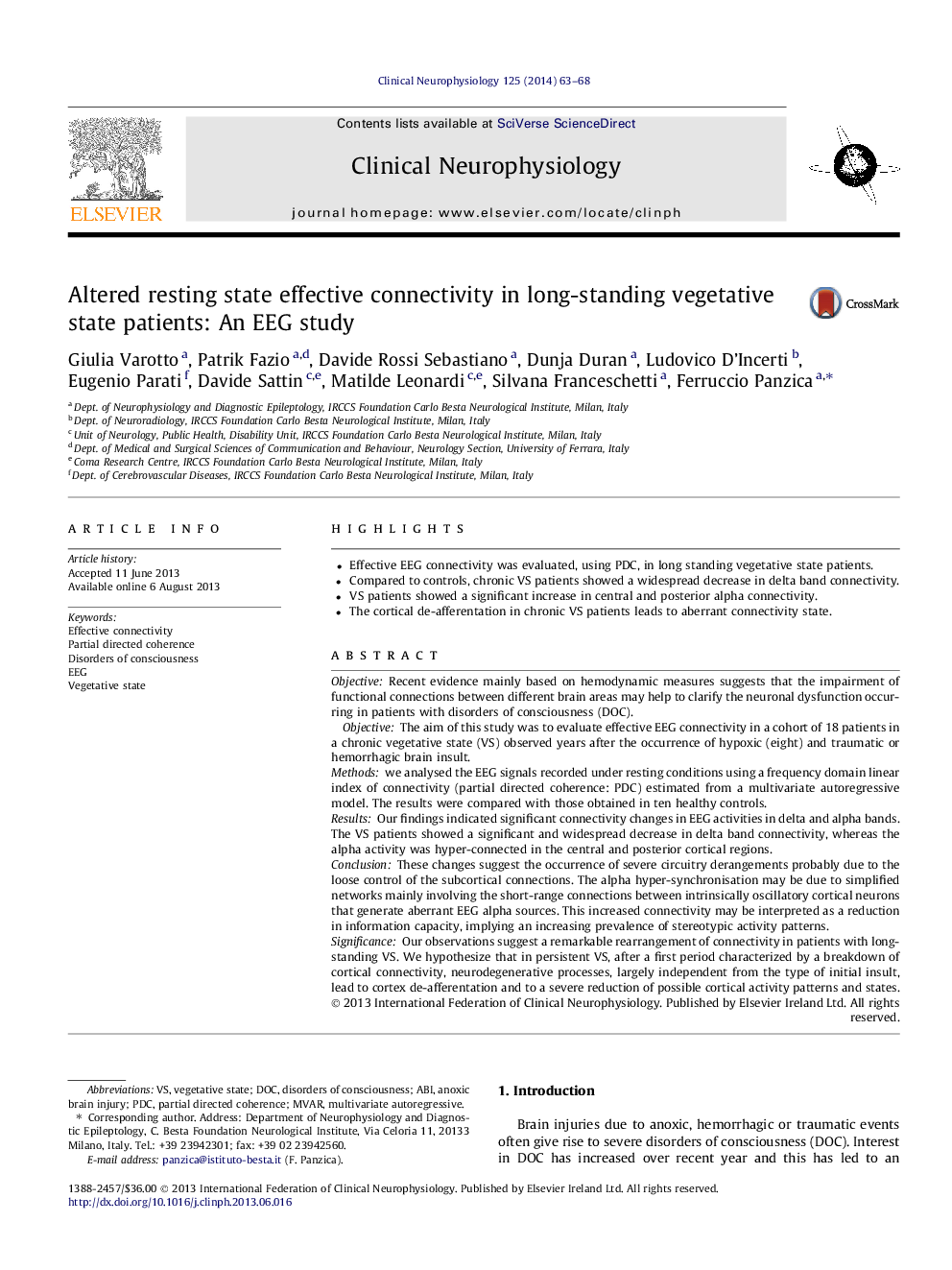| Article ID | Journal | Published Year | Pages | File Type |
|---|---|---|---|---|
| 3043634 | Clinical Neurophysiology | 2014 | 6 Pages |
•Effective EEG connectivity was evaluated, using PDC, in long standing vegetative state patients.•Compared to controls, chronic VS patients showed a widespread decrease in delta band connectivity.•VS patients showed a significant increase in central and posterior alpha connectivity.•The cortical de-afferentation in chronic VS patients leads to aberrant connectivity state.
ObjectiveRecent evidence mainly based on hemodynamic measures suggests that the impairment of functional connections between different brain areas may help to clarify the neuronal dysfunction occurring in patients with disorders of consciousness (DOC).The aim of this study was to evaluate effective EEG connectivity in a cohort of 18 patients in a chronic vegetative state (VS) observed years after the occurrence of hypoxic (eight) and traumatic or hemorrhagic brain insult.Methodswe analysed the EEG signals recorded under resting conditions using a frequency domain linear index of connectivity (partial directed coherence: PDC) estimated from a multivariate autoregressive model. The results were compared with those obtained in ten healthy controls.ResultsOur findings indicated significant connectivity changes in EEG activities in delta and alpha bands. The VS patients showed a significant and widespread decrease in delta band connectivity, whereas the alpha activity was hyper-connected in the central and posterior cortical regions.ConclusionThese changes suggest the occurrence of severe circuitry derangements probably due to the loose control of the subcortical connections. The alpha hyper-synchronisation may be due to simplified networks mainly involving the short-range connections between intrinsically oscillatory cortical neurons that generate aberrant EEG alpha sources. This increased connectivity may be interpreted as a reduction in information capacity, implying an increasing prevalence of stereotypic activity patterns.SignificanceOur observations suggest a remarkable rearrangement of connectivity in patients with long-standing VS. We hypothesize that in persistent VS, after a first period characterized by a breakdown of cortical connectivity, neurodegenerative processes, largely independent from the type of initial insult, lead to cortex de-afferentation and to a severe reduction of possible cortical activity patterns and states.
